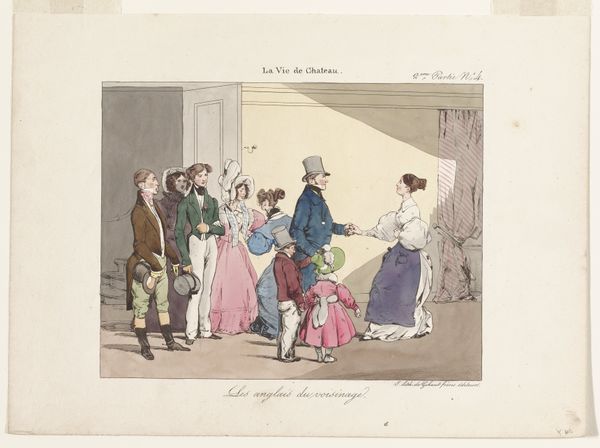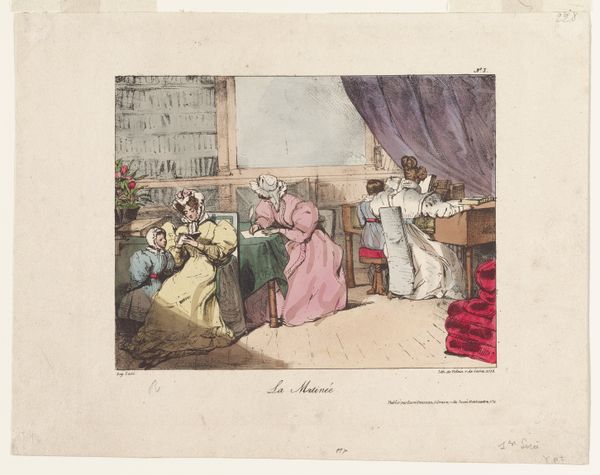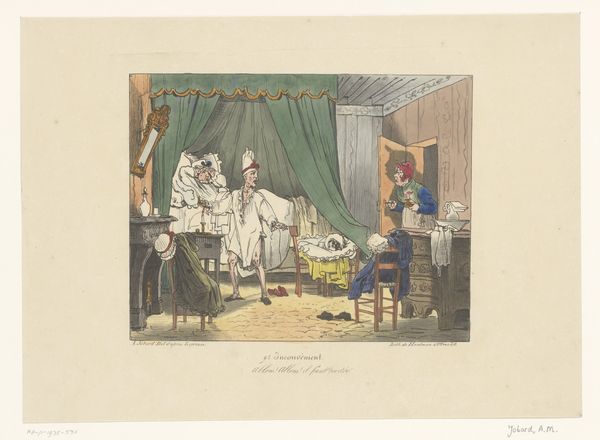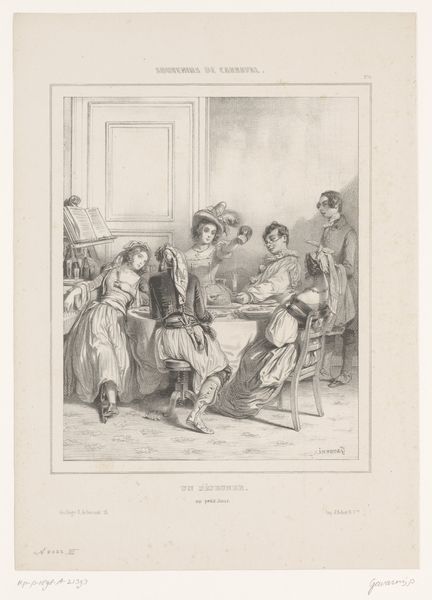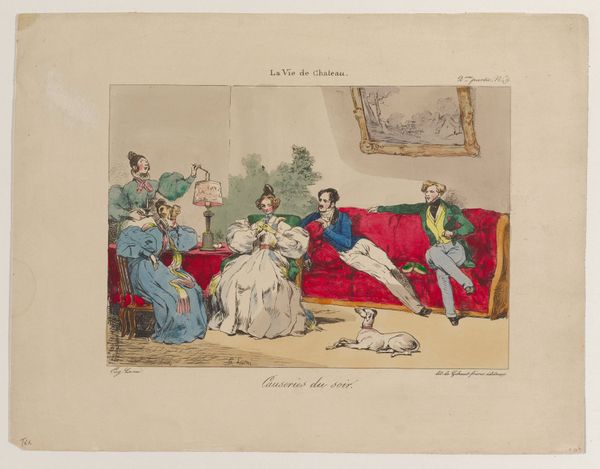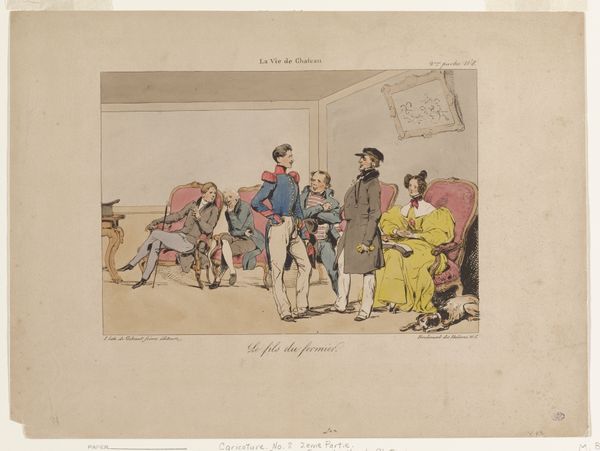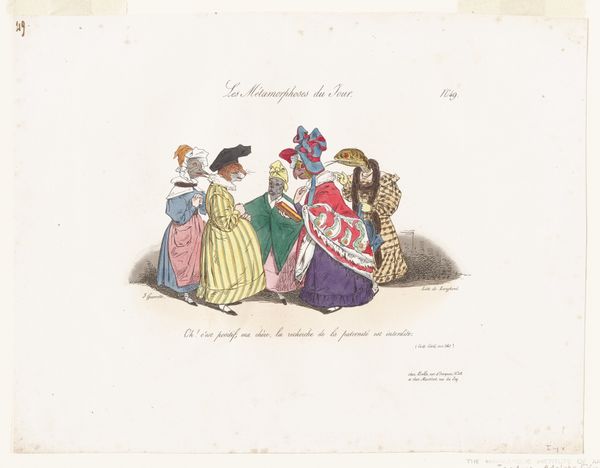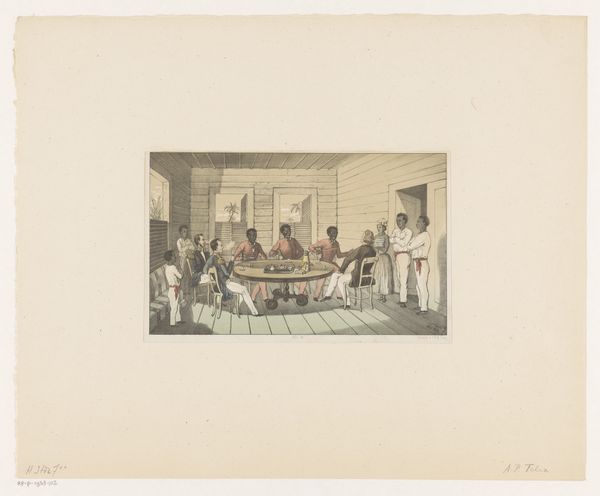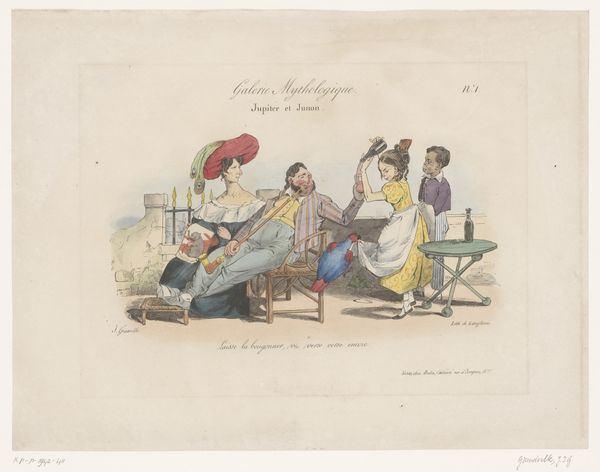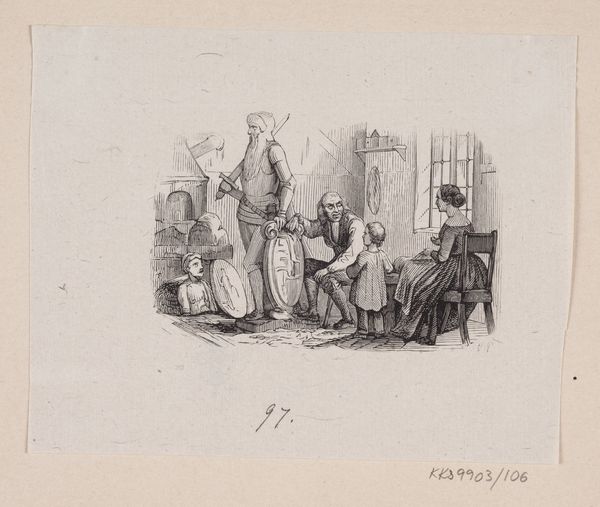
print, watercolor
# print
#
caricature
#
figuration
#
watercolor
#
romanticism
#
france
#
genre-painting
#
history-painting
Dimensions: 6 3/4 x 8 1/8 in. (17.15 x 20.64 cm) (image)
Copyright: Public Domain
Curator: Eugène-Louis Lami created this watercolor print titled "Caricature. No. 9. Les Contes de revenants" in 1828. Editor: The colors are muted, almost pastel, yet there's something unsettling in the stiff poses of the figures and the exaggerated features. Curator: The Romantic period was obsessed with the gothic, the sublime, and, of course, ghost stories! Here, Lami depicts a group gathered in what appears to be a fashionable salon, listening intently. It’s a scene ripe with social commentary. Editor: Yes, I wonder about the specific making of these prints. The level of detail suggests careful etching and watercoloring, likely involving several artisans. Were these luxury items, widely circulated, or something in between? What papers and inks did they use and how might those choices play into the overall message about wealth and society at that time? Curator: That's an excellent point. These prints likely found their audience among the burgeoning middle class in France. Caricatures served as accessible visual commentary, skewering the elite's mannerisms. It provided social mobility for visual culture that wasn’t previously as pervasive. Editor: Absolutely. Note also how the artist highlights the fabrics - from the flowing drapes to the rich, but slightly aged looking, coverings of the furniture. The fabric qualities really play into that sense of uncanny, of history and wealth decaying into something quite humorous. Curator: There’s something subtly subversive about depicting the upper crust indulging in what was, in many circles, considered frivolous entertainment. By immortalizing it, the image creates an immediate public impression that can sway opinions and trends. Editor: It speaks to how class anxiety manifested. The pursuit of ghost stories allowed an embrace of the gothic. At the same time, the making of luxury items – such as these detailed, delicate prints, suggests the beginnings of new forms of commodity production of leisure activity, ready for an emerging consumer society. Curator: It also subtly underscores the artist’s position in French society as its role in image making becomes much more integral to the development of French civic life. Editor: This really underscores how a print, something seemingly simple, actually can tell a bigger and broader story, connecting not only aesthetics to social forces but to the very physical circumstances of their creation and consumption.
Comments
No comments
Be the first to comment and join the conversation on the ultimate creative platform.


